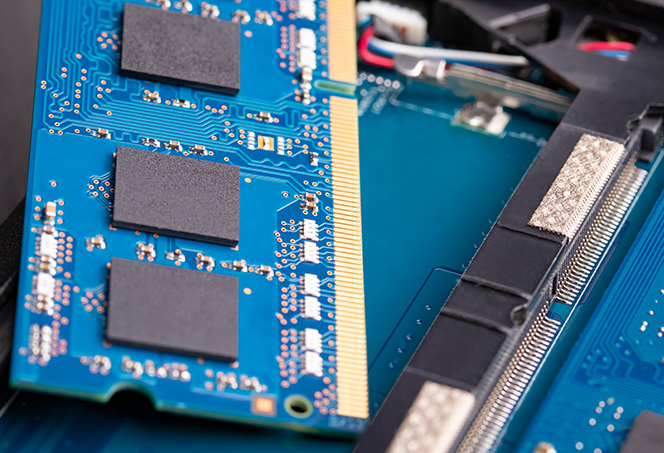Some Mac users may want to clear caches and clean out temporary files from Mac OS. Caches and temporary files can include things like web browser cache and history, messaging cache, app specific temp files and caches, partially completed downloads, and much more. I truly find this app very helpful when I need the performance back on iMac, I can set it to clear a good number of Gigabytes of memory. However, the app has also shown itself to becoming a bit of a nuisance while in use.
There are mainly two reasons why you want to restore your Mac to factory settings and erase everything.
You want to erase your MacBook Pro/Air, MacBook, iMac to sell or give away the Mac.
Your Mac is running slow or having other problems so that you want to delete everything on Mac to start over.
It is not difficult to erase everything on a Mac and reformat the MacBook or iMac. But if you want to reset MacBook Pro/Air, iMac without losing data, or securely and completely wipe a Mac, there are a couple of things you should do. Just follow this guide to complete all the steps that are needed to securely and completely erase everything on Mac. Your Mac will be restored to factory settings after that.
Step 1: Back Up Your Mac Before Factory Reset
To clear RAM on Mac, you will have to keep Chrome's task manager in check. It can be used to force quit the heavy processes in the browser which uses the RAM. It will directly reduce CPU usage. Just open the Chrome settings, click on More Tools and you will find the Task Manager there. Identifying a memory leak over a process simply using a large amount of memory under normal operation can be difficult, but there are a few tell-tale signs. First, it helps to know the normal memory load of most programs on your Mac. To do this, keep Activity Monitor open and sort the list of processes by Memory. Clearing the clipboard on Mac frees up memory and prevents confidential or sensitive data from being exposed. You will find below the steps to Clear Clipboard on Mac. Clear Clipboard On Mac. When you Copy or Cut anything on Mac, the data remains always available in the clipboard, even after you paste the data.
I believe that there must be some important files on your Mac. Therefore, it is a must to back up your files before erasing your MacBook or iMac. There are mutiple options to back up your Mac:
Move everything that are important to you to an external hard drive. It is time-consuming but feasible if you have limited documents, photos, videos, etc. that need to be backed up before erasing Mac.
Back up your files on Mac to a cloud storage, such as iCloud. Before doing that, make sure your iCloud account have enough free space.
Make a copy of your Mac data to an external hard drive with a backup program, such as Time Machine, Apple's built-in backup tool for Mac. Learn about the steps to back up a Mac: How to Backup Your Mac with or without Time Machine.
You can wipe a Mac without losing data by using one of the backup methods mentioned above. And to reduce the size of your Mac's backup and incease the backup speed, it is recommended to clean useless junk files on your Mac before a Time Machine or iCloud backup. FonePaw MacMaster can easily delete caches, logs, borwsing history, duplicate files and photos, large files, useless apps and more from your Mac.
Download
Download and run FonePaw MacMaster on your Mac.
Select the file type you want to clean, such as system junks, duplicate photos. Click Scan.
On shift123. Click Clean to remove the junks you don't need.
Go ahead to back up your Mac. The backup will be finished more quickly, taking less space of your external hard drive or iCloud account.
Step 2: Completely Delete Private Files
Do you know that files on Mac are actually recoverable after factory reset? That's right. Even though you have reformatted your Mac and erased everything on Mac, it is still possible to recover the erased files on the Mac with a professional data recovery program such as FonePaw Data Recovery. If you have confidential files on your Mac and don't want to take the risk that somebody may find the files from the reformatted Mac after performing data recovery, you can use Eraser on FonePaw MacMasterto securely delete confidential files on your Mac before factory reset. The Eraser can erase the trace of a file on the hard drive and make it unrecoverable.
Install FonePaw MacMaster on your Mac.
Click Eraser and select the files you want to destroy.
Click Erase to make it unrecoverable.
How To Clear Memory On Imac
Step 3: Turn off FileVault
FileVault encryption is an Apple built-in feature that is designed to encrypt your hard drive and files on the hard drive. It is recommended to turn off FileVault before reset and clean install macOS system. Here are the stpes to disable FileVault encryption.
Open System Preferences > Security & Privacy.
On the Security & Privacy window, click the FileVault tab.
Click Lock button and you will need to enter password of the administrator account the unlock FileVault settings.
After entering the password, you are able to click Turn Off FileVault. Click it.
All files on your Mac will be dencrypted after FileVault is off.
Step 4: Remove iTunes Authorization and iCloud Account
You don't want your iTunes or iCloud account to be linking to your MacBook or iMac if you decide to sell it or give it away. You can authorize only 5 computer with your iTunes account so you don't want to lose an allocation to a Mac that you no longer own. So before erasing your MacBook or iMac, you should first deauthorize iTunes and disable iCloud on your Mac.
Deauthorize iTunes on Mac
Open iTunes on Mac.Click Account > Authorizations > Deauthorize This Computer.
You'll need to enter the password of your Apple ID. Then click Deauthorize.
Sign out of iCloud on Mac
Open System Preference > iCloud. Click Sign Out.A window will pop up, asking whether you want to keep a copy of your iCloud data on the Mac.
Deselect all the options and click Continue, which will ensure that your iCloud data won't stay on the Mac.
Also, don't forget that your iCloud account can also be used to receive iMessage. So run Messages, click Preferences > Accounts to sign out of iMessage.

Step 5: Erase MacBook, MacBook Air/Pro, iMac
After finishing the above steps, you are now offically able to wipe your MacBook, MacBook Pro, MacBook Air or iMac. You need to erase your Mac in recovery mode.
Enter your Mac into recovery mode
Power off your Mac and then reboot it. As it is rebooting, press and hold Command + R (Option + Command + R or Shift + Option + Command + R) until you see the Apple logo.
Generally you can use Command + R combination to enter the Recovery mode. If you need to upgrade you need to the latest macOS compatible with your Mac, use Option + Command + R; If you want to clean install the macOS that came with your Mac, use Shift + Option + Command + R.
Erase everything on your Mac
When you are in recovery mode on Mac, you will see the macOS Utilities menu. Select Disk Utility.
Select the disk to erase. To erase everything on your Mac, you usually should choose the main hard drive named Macintosh HD.
If the Mac is running High Sierra or later, Disk Utility will show all the Macs linked with your Apple ID under Macintosh HD. So be careful not to delete the drive of other Macs.
Click Erase. Then you need to enter name and format of the drive. You can choose either APFS or Mac OS Extended (journaled) to reformat the Mac. APFS is a new file system introduced by Apple since High Sierra, which is more recommendable.Click Erase to begin wiping everything on your Mac.

Step 6: Reinstall macOS on MacBook, iMac
After deleting everything on your Mac, you can now reinstall macOS. Go back to macOS Utilities menu. Select Reinstall macOS and follow the on-screen instructions to finish.
That's all about how to factory reset your Mac and erase everthing. If you have more question, drop it in the comment section.
Looking for a solution of this type that can be used to protect remove the Macintosh hard drive before reselling your old Mac machine, so have to worry about people (mostly computer geeks) has any chance of data recovery from the old computer! It gets to the right place and focus on the need to clean Mac and how doing the work in selective options, based on the particular circumstances.

Sulution 1: Thought Empty Trash to Delete Files Permanently? NO!
You are simply wrong! The fact is - when you empty the Recycle Bin, or using other similar methods (such as Command + Shift + Del) to remove unnecessary files you though that prevented the trash, then almost certainly still recoverable. Because the files are not actually deleted. What happens is that there are no more files regarding the Macintosh operating system (HFS +), is concerned and the space they occupied becomes available for reuse by other files.
But the disk space does not get reused immediately for the data presented in the deletion will remain on the hard disk for the future to come. Usually, it will take weeks, even months to make those deleted files 'written on' the new data generated. These data are highly risky, because they can be recovered if a bad guy get your Mac!
Solution 2: Wipe A Mac Clean with Data Wiper Software (Recommend)
Simple deletion will not far enough to permanently remove your private data from your Mac hard drive, it just remove the corresponding data entry for each file. The original data still resides on the Mac hard drive and can be easily recovered using any data recovery applications. So in order to wipe your sensitive data beyond recovery, the deleted data must be overwritten many times with new data algorithm. The most efficient solution to clean Mac safely without the CD is data wiping program.
If you prefer a pure gum Mac program, Safewiper Data Wiper Mac can be a good program to wipe sensitive data from both the physical and the logical drives. It offers two scan modes 'File Wipe' and 'Drive Wipe' which can be used to effectively delete a series of files and Mac wipe Mac hard drives. The tool is completely easy to use as it requires no special skills. Once a drive has been wiped, it cannot be recovered using any recovery tools.
Key Features of Wipe Mac Tool
- • Wipes selected files and entire folder on Mac
- • Completely wipes Internet browsing data, system traces, recent file histories.
- • Permanently erases Mac hard drive without restore.
- • Allows to schedule the wiping process and wiping time.
- • Wipes recent Ffile histories and free space
- • Compatible with Mac OS X 10.7, 10.6, 10.5, and 10.4
Step 1 Download and Install the Wipe Mac Application, Run It.

Add Memory To Imac 27
Download and install the program on your Mac, then launch the program from desktop shortcut.

Note: As you can see, it offers three wiping options for your needs, 'Erase File/Folers' and ' Wipe Drive' and 'Wipe Unused Space' , you seleect the one based on your actual needs.
Step 2 Select the File Type You Need to Wipe
In this article, we take the 'File Wipe' as an example to explain how it works. Select the 'File Wip' and next,
All of your hard drivers will be listed on the right, then, choose the drive which needs to be completely wiped off and click on 'Next' option.
You can see there are 6 data wiping options designed for your choice, each is targeted for different wiping needs.
How To Clean Up Memory On Imac
For example 'Wipe internet avtivily' can wipes all Internet activity traces and temporary Internet files, including URL you typed, online forms you filled, users names and password you entered, browsing history, temporary files it created.
How To Clear Up Memory On Imac
Step 3 Start to Wipe Your Mac Data
In some wiping option, you'll be required to choose the essential shredding pattern based on the requirement, you can easily select the security levels. Click the 'Start wiping' button to start to wipe the selected the data. After the wiping process is complete, an intimating message will be displayed.
How To Clear Memory On Mac Mini
As you can see, all of your sensitive data will be completely wiped without restore. So, when you plan to resell your Mac computer, you should be aware of the data security isn't highly crucial and you must keep in mind that simple deletion or emptying the 'trash' will not totally erase all your personal data away, using some free data recovery apps those deleted files can be easily recovered, others can easily reopen and rebuild your personal data. So to permanently wipe a Mac clean without recovery, you'd better try this Mac wiping software, it has built many advanced wiping algorithm that can automatically wipe your hard drive or selected sensitive data. It makes impossible to get back files by making use of any recovery tools.

Comments are closed.